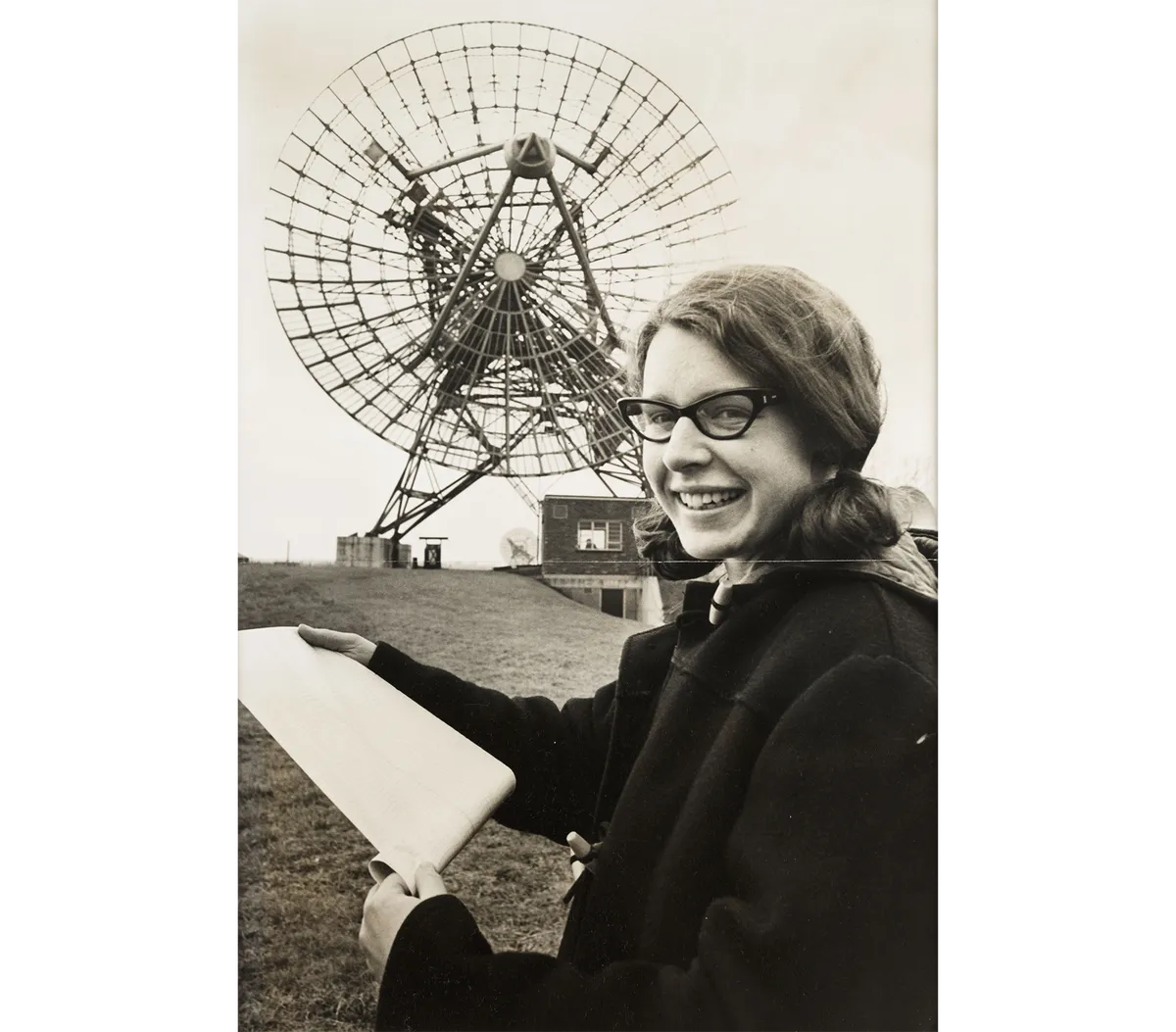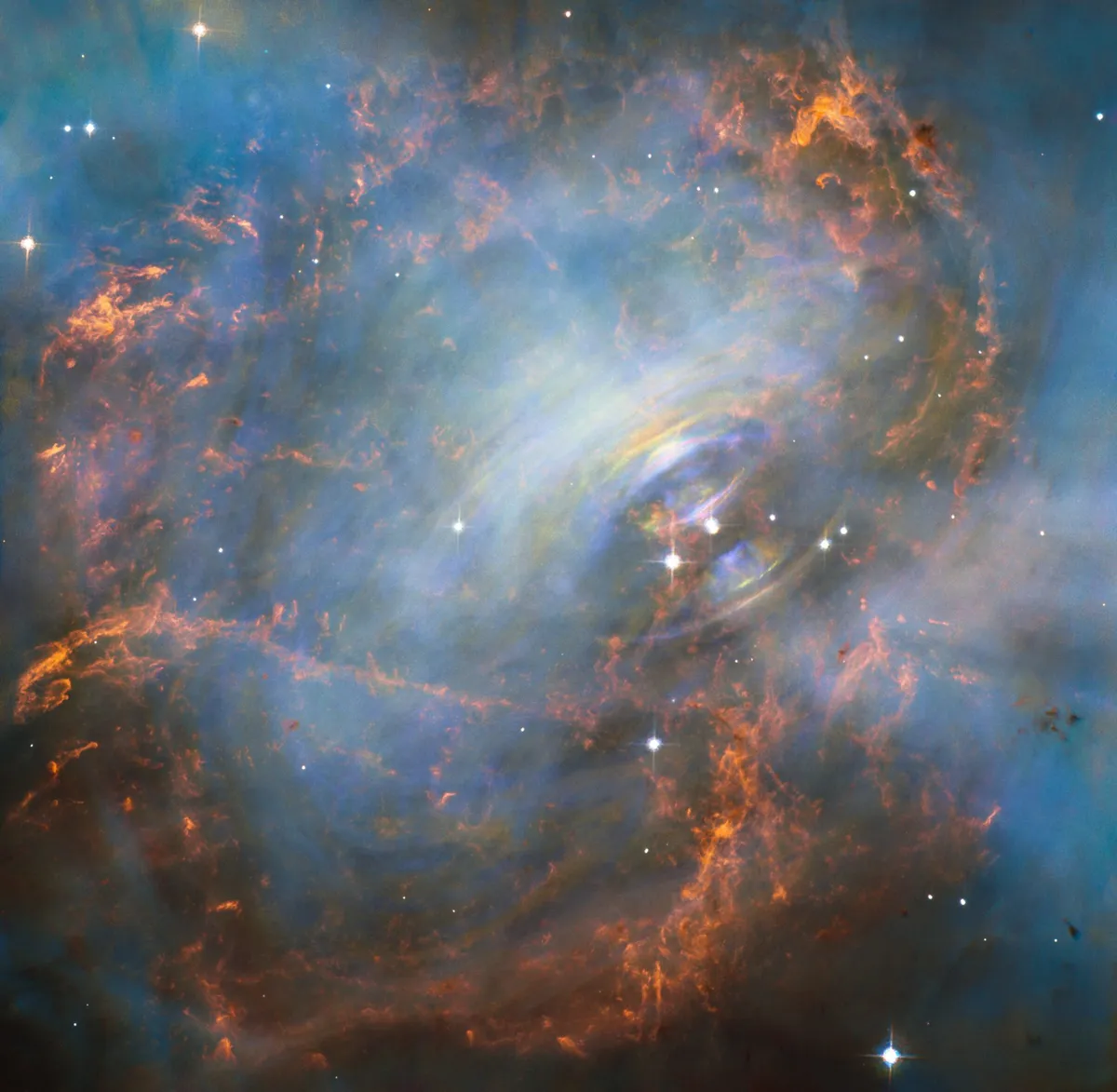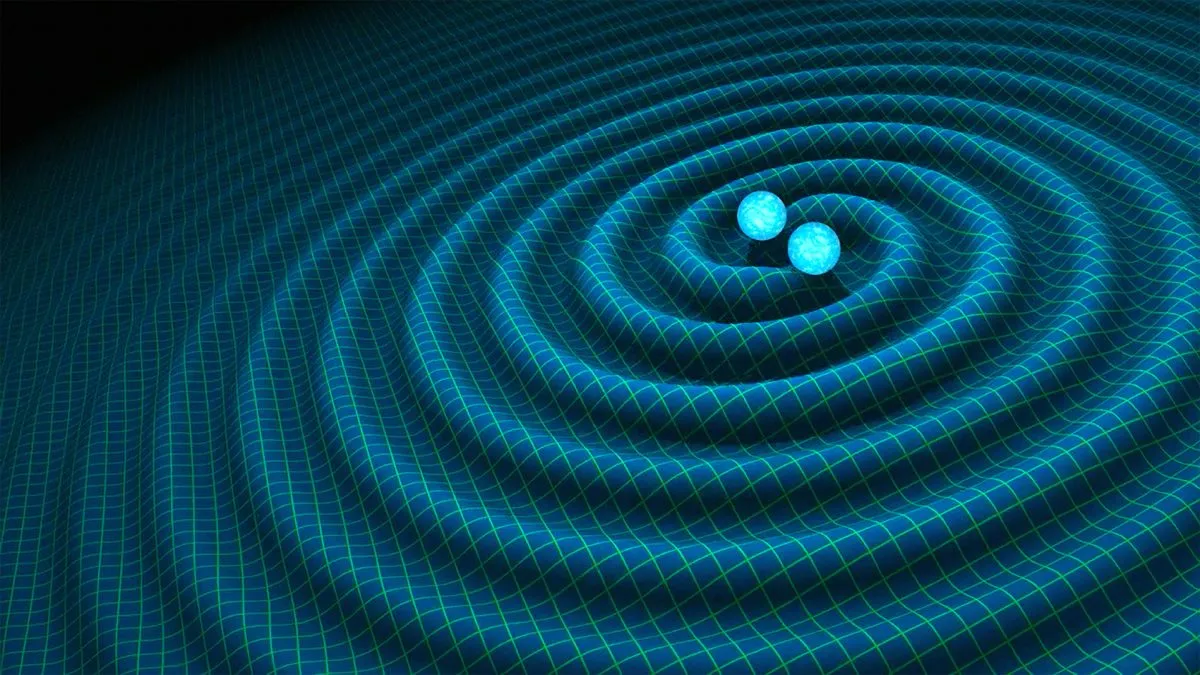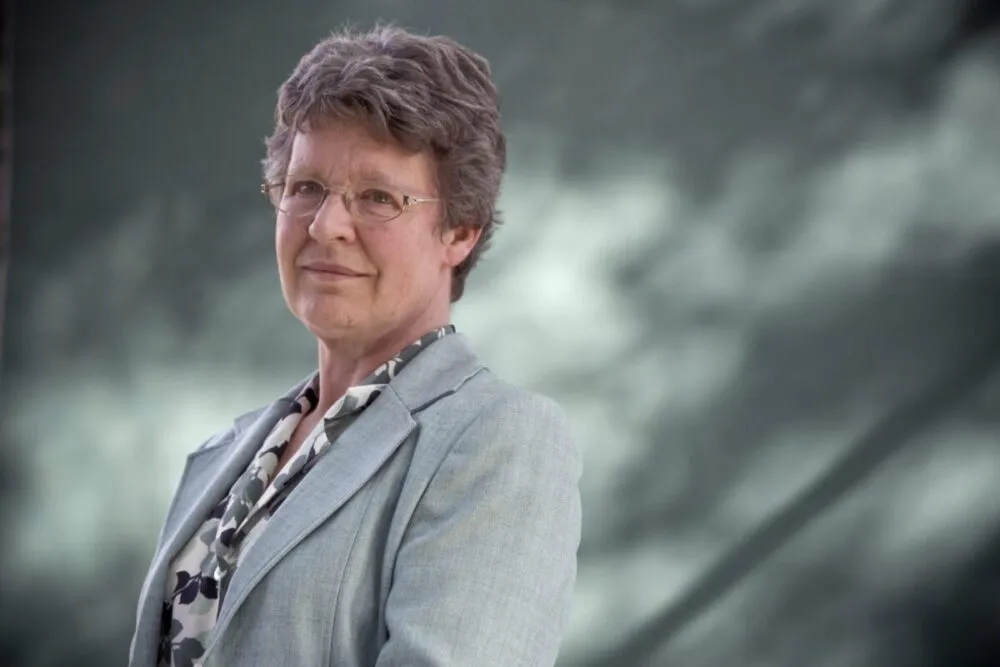In August 1967, graduate student Jocelyn Bell (now Bell Burnell) discovered the first pulsar, or 'pulsating radio star’ at Mullard Radio Astronomy Observatory near Cambridge. The find brought her thesis advisor Antony Hewish a share in the 1974 Nobel Prize in Physics.
The study of these weird beacons – the collapsed remnants of massive stars that went supernova at the end of their lives – has yielded new astronomical surprises.
Such observations and discoveries include the brightest, furthest pulsar ever detected, the notion that habitable planets may exist around pulsars, or observations of a pulsar punching a hole in a companion star's disc.
Pulsars really are fasinating objects. Take a look at the pulsar wind nebula known as MSH 15-52 below, for example, a strange object that looks like a ghostly hand surrounding pulsar PSR B1509-58.

What is a pulsar?
Imagine a sphere the size of the Isle of Wight. It holds almost 1.5 times the mass of the Sun; one spoonful easily weighs five billion tonnes.
The ultra-compact cosmic cannonball whirls around its axis at 43,000 times a minute – faster than your kitchen blender.
Located 20,000 lightyears away, its collimated beams of radio waves sweep through the Milky Way.
In November 2004, the rapid flickering of this celestial lighthouse was detected by Canadian radio astronomer Jason Hessels. PSR J1748-2446ad, as the object has been christened, is still the fastest-known millisecond pulsar.

What do we know about pulsars?
To date, some 3,000 pulsars are known. But discovering new ones isn’t as straightforward as that number might suggest.
They’re small and faint, explains pulsar astronomer Joeri van Leeuwen of ASTRON, the Netherlands Institute for Radio Astronomy. Moreover, their pulses are smeared out by electrons in interstellar space.
A large radio telescope in itself is not sufficient to find new pulsars; astronomers need the number-crunching brute force of computers to search the collected data for the subtle flickering.
Asked about the most important technological development that enabled the wealth of pulsar discoveries over the past half century, van Leeuwen has one succinct answer: “Computers.”
If 21st-century computer technology had been available back in the late 1960s, he explains, almost all current knowledge could’ve been gleaned back then.
The actual moment of discovery was the night of 27/28 November, when I found the famous bit of scruff while studying tens of metres of chart recordings.
Jocelyn Bell Burnell
After all, pulsar research is all about finding as many celestial lighthouses as possible, and precisely clocking the arrival times of their individual radio pulses.
That’s how American radio astronomers Joe Taylor and Joel Weisberg were able to detect gravitational waves (albeit indirectly) in the late 1970s.
In 1974, Taylor’s graduate student Russell Hulse discovered a pulsar in a binary system and careful timing measurements over subsequent years revealed that its orbit was slowly shrinking.
Its ever-decreasing orbital circles were the result of energy being carried away by the spacetime ripples predicted by Einstein’s theory of general relativity.
Astronomers now know of about a dozen pulsars that orbit another neutron star (which may or may not be visible as the pulsars themselves). In 2014, they even found a triple system.

What can we learn from pulsars?
These natural physics laboratories enable subtle tests of general relativity. So far, the match between theory and observation is “frustratingly perfect”, according to Hessels.Still, future measurements might reveal tiny discrepancies.
The first discovery of a millisecond pulsar, in 1982 by Berkeley astronomers Don Backer and Shrinivas Kulkarni, was another unexpected breakthrough.
Whirling around at hundreds of revolutions per second, it’s thought that millisecond pulsar are spun up to such speeds by accreting matter from a companion star.
However, many millisecond pulsars are single. “It’s still a puzzle,” says Hessels. “Maybe the companions have been evaporated away.”
The first pulsar was so mysterious that astronomers thought they might have detected artificial radio signals from an extraterrestrial civilisation.
Pulsar studies not only yield information on general relativity and stellar evolution, but scrutinising the ultra-dense and strongly magnetised objects also sheds light on condensed-matter physics.
Who knows, a pulsar’s interior may contain quark matter, in which individual quarks are not bound into nuclear particles – something that has only been observed in particle accelerators so far.
Pulsars (and neutron stars in general) are also of much interest to high-energy astrophysicists working on cosmic gamma rays (pulsars are copious emitters), gamma-ray bursts, fast radio bursts and very-low-frequency gravitational waves.
Suppose a ripple in spacetime travels through the Universe, alternately squeezing and stretching space itself.
If the wavelength is long enough – so that the stretching and squeezing occurs very slowly – it should be possible to detect the effect in the pulse arrival times of distant pulsars.

The reason: if the space between Earth and the pulsar expands, the pulses will take longer to arrive at our radio telescope.Equally, if space contracts, the pulses will arrive a little bit earlier than expected.
Surprisingly, such extremely low-frequency Einstein waves are expected to exist. They should be generated by binary supermassive black holes in the cores of distant galaxies.
So far, however, searches for these ‘nanohertz waves’, carried out in Australia, Europe and the United States have come up empty.
Back in 1967, the first pulsar discovered by Jocelyn Bell Burnell was so mysterious that astronomers briefly thought they might have detected artificial radio signals from an extraterrestrial civilisation.
In the decades since then, pulsar astronomy has rapidly evolved from groping in the dark to a cutting-edge sub-discipline of astrophysics, yielding new insights about the high-energy universe that’s at least as exciting as a phonecall from ET.
The discovery of the pulsar in the Crab Nebula in 1968 revealed that pulsars are rotating objects instead of vibrating ones. That was very important
Jocelyn Bell Burnell
In the future, new searches may reveal pulsars in other galaxies, beyond the Magellanic Clouds, muses Bell Burnell.“Or in intergalactic space,” she says, referring to them as “missing bits of the jigsaw puzzle.”
Hessels expects thousands of new millisecond pulsars to have been discovered by then. “Also, extragalactic pulsars may help us probe the space between galaxies,” he adds.
Meanwhile, van Leeuwen looks forward to a new revolutionary milestone: the discovery of a millisecond pulsar orbiting a black hole.
“My hope is that such an extreme system might finally reveal a crack in general relativity, leading the way to the long-sought theory of quantum gravity.”
4 questions for Jocelyn Bell Burnell

What brought you into radio astronomy?
I wanted to become an astronomer, but I’ve always been bad at staying up at night, so that ruled out optical astronomy. I had no idea of where it would take me. Back in 1967, radio astronomy was a very new and exciting field.
When was the first pulsar discovered?
Observations with the new radio telescope at Mullard started in late July 1967. With hindsight, the pulsar signal was visible in data taken in August. However, the actual moment of discovery was the night of 27/28 November, when I found the famous ‘bit of scruff’ while studying tens of metres of chart recordings.
Over the past 50 years, what has been the most important result?
I’d rather not pick one thing – there has been a lot. The discovery of the pulsar in the Crab Nebula, in 1968, revealed that pulsars are rotating objects instead of vibrating ones – that was very important. Of course, binary pulsars and millisecond pulsars were breakthrough discoveries, too.
Do you have a favourite pulsar?
No, I don’t, although PSR B1919+21, which I found in 1967, is obviously very special. [The chart recordings of this pulsar grace the cover of British rock band Joy Division’s 1979 debut album Unknown Pleasures.]
Govert Schilling is an astronomy journalist and author of the book Ripples in Spacetime. This article originally appeared in the August 2017 issue of BBC Sky at Night Magazine.

